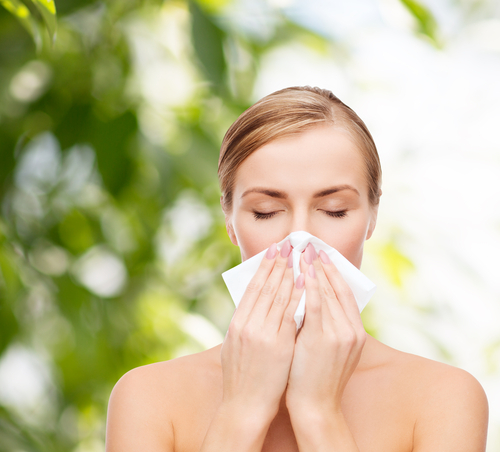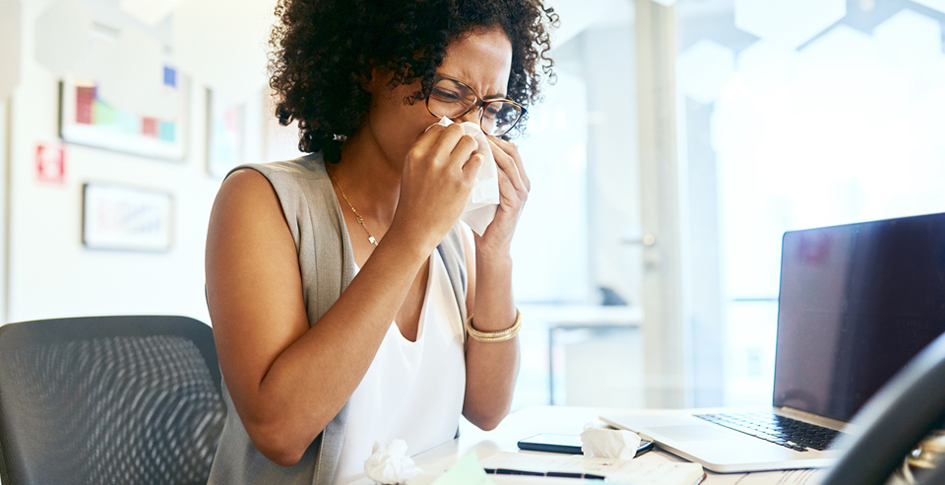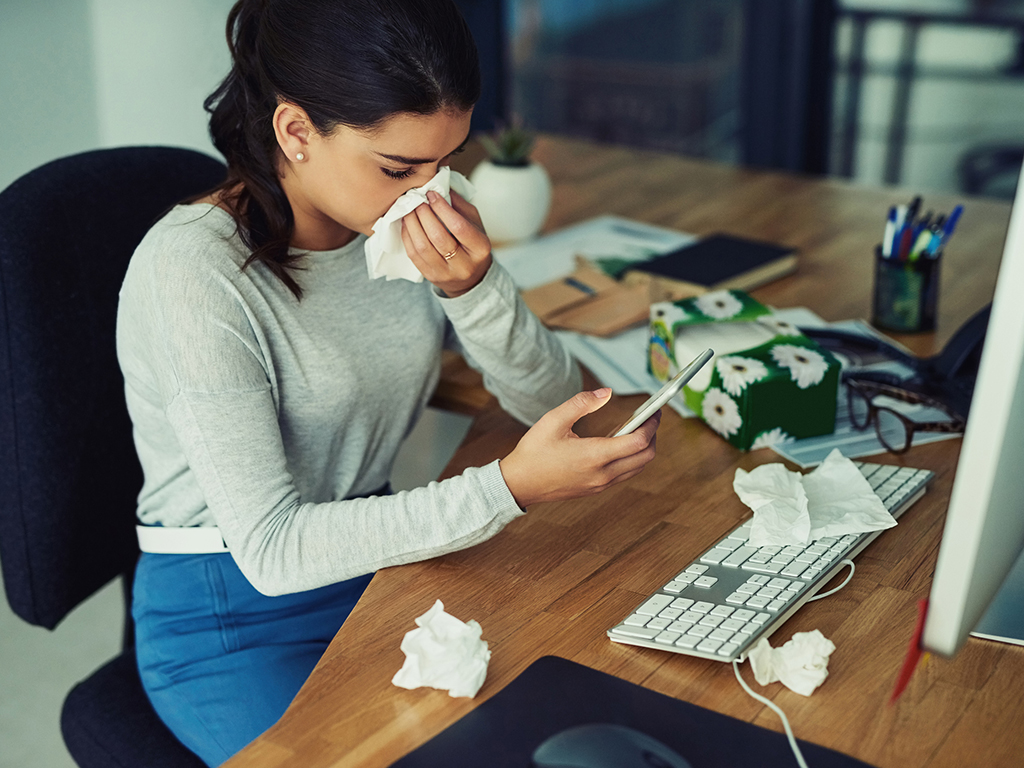
OCTOBER 25, 2022 / BY ACTIVEPURE / 5 MINUTES OF READING
Business owners, are your employees complaining of headaches, nausea, or fatigue when they work from the office? Building managers, do your tenants call you to fix the HVAC system when nothing seems broken? If so, your employees and tenants may be suffering from a Building-Related Illness (BRI).
The Basics of Building-Related Illness
According to the EPA, “In contrast [to Sick Building Syndrome], the term ‘building-related illness’ (BRI) is used when symptoms of diagnosable illness are identified and can be attributed directly to airborne building contaminants.”
To put it even more simply, Sick Building Syndrome refers to feeling ill in a certain building without knowing why, while Building-Related Illnesses refer to being made ill by building conditions and knowing why.
Signs of Building-Related-Illnesses
According to the EPA, signs of a Building-Related Illness include “cough; chest tightness; fever, chills; and muscle aches.” Unlike Sick Building Syndrome, Building-Related Illness symptoms can be “clinically defined” and “may require prolonged recovery times after leaving the building.” Building-Related Illnesses may also include illnesses that are not caused by building conditions but are exacerbated by them.
Some Examples of Building-Related Illnesses
Legionnaires’ Disease: Per the CDC, Legionnaires’ disease is caused by the inhalation of water droplets containing Legionella bacteria. Legionella can grow in faucets, showerheads, decorative fountains, hot water tanks, and industrial cooling towers. Legionella is nearly impossible to remove from a building’s water system entirely, but it can be kept to an acceptable level by following ASHRAE Guideline 12-2020 & ASHRAE Standard 188-2018.
Asthma: Offices should institute air quality practices that minimize asthma triggers such as mold, noxious cleaning fumes, and dust mites. This means regular cleaning with a HEPA vacuum, cleaning up spills and leaks promptly to prevent mold growth, selecting environmentally friendly cleaning products, and making use of HEPA air cleaners.
Inhalation fevers: A large category of reactions that can result from inhaling anything from microbiota growing in a humidifier to metal fumes (though this latter is more likely to occur in an industrial rather than an office environment). The solution to this is to eliminate the source of the offending substance if possible (such as cleaning your humidifiers with vinegar as recommended by HGTV).
Building-Related Illnesses are specific, diagnosable conditions. (Credit: Getty / PeopleImages)
Conditions often confused with Building-Related Illnesses
Several terms are sometimes mistakenly conflated with either Building-Related Illness or Sick Building Syndrome.
Lung Cancer & Asbestosis: Please note that lung cancer from radon and asbestosis from asbestos exposure are not generally considered Building-Related Illnesses. Though such illnesses are technically related to building conditions, symptoms don't show until years after exposure.
Nocebo Effect: According to the New Zealand Medicines and Medical Device Safety Authority, “The nocebo effect is the opposite of the placebo effect.” It describes a phenomenon where people can experience real physical symptoms merely out of the belief that something will cause harm. For instance, people may experience symptoms of mold exposure independent of the presence of mold, merely because they believe mold is present.
Tight Building Syndrome: This term refers to SBS when it is hypothesized that the principal cause of the SBS is inadequate ventilation. Since the energy crisis of the 1970s, buildings have been built for energy efficiency rather than the comfort of occupants, resulting in a building which is too tightly sealed to receive sufficient fresh air. This trend is just beginning to correct itself.
Multiple Chemical Sensitivity (MCS): Multiple Chemical Sensitivity refers to a phenomenon where people experience adverse reactions when they have been exposed to chemicals below a level that is considered harmful. It is unknown if MCS is primarily physical or psychological.
Idiopathic Environmental Intolerance (IEI): Similar to MCS, sufferers of IEI experience negative effects from exposure to a variety of environmental factors at levels far below that which are considered harmful; this could include anything from electromagnetic fields to the sound of windmill farms. According to one German paper, “The condition is controversial, but several indications strongly suggest that the symptoms result from nocebo mechanisms.”
Toxic Mold Syndrome: A media hype term for alleged symptoms of exposure to ‘Black Mold’ (Stachybotrys chartarum). Though it can be quite deadly to eat, there is almost no evidence that inhaling black mold spores can cause worse symptoms than inhaling any other mold spores. That being said, mold is an allergy and asthma trigger, so its presence should be mitigated as soon as possible.
Is COVID-19 a Building-Related Illness?
We found no peer-reviewed literature which referred directly to COVID-19 as a Building-Related Illness at time of publishing. However, as it is a disease primarily spread through indoor airborne transmission, COVID-19 is likely related to building conditions.
According to the CDC, one of the major ways to prevent the spread of COVID-19 is to improve ventilation. However, this is difficult for offices where windows don't open and/or rely on building-wide HVAC systems. Increasing ventilation to the newly recommended level would greatly increase an office's energy bill and impact corporate sustainability goals.
One possible solution is to supplement other COVID-19 recommendations with active air purification. Unlike passive air cleaners such as HEPA filters, active air purification neutralizes bacteria, viruses, and mold out in the room. ActivePure Technology is one example of an active air purifier, as it uses oxidative molecules to inactivate 99.99% of many common microbes and viruses. In fact, the Aerus Pure & Clean with ActivePure Technology was shown to reduce 99.99% of the airborne virus which causes COVID-19 in ONE minute.
A Few Final Words
Because they have a specific and known cause, Building-Related Illnesses are, in some ways, easier to solve than more mysterious building problems. Nevertheless, the ActivePure team can assist building managers in addressing underlying issues. Our experts can provide customized solutions, including ActivePure’s proprietary technology that targets mold, bacteria, viruses, and VOCs. As many devices powered by ActivePure Technology are paired with HEPA filters, we can also assist with dust mites, pollen, and other allergens.
Contact ActivePure to learn more about improving the air quality in your office building.




